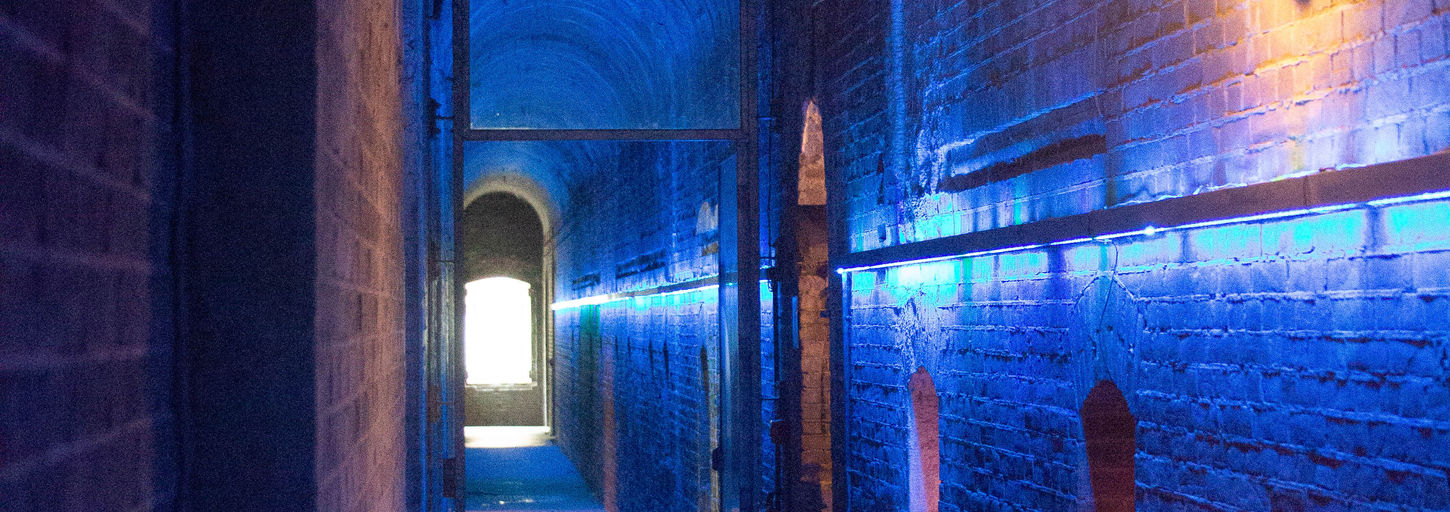
Pampus
a living lab case on a world heritage island
In september 2019, the AMS Institute and Pampus Island joined forces in their shared vision of contributing to the sustainability transition arising from the UN Sustainable Development Goals. Pampus, being UNESCO-world heritage, is hereby raising the bar for other UNESCO-sites to follow in this transition. The case an AMS graduate team has been working on, in the format of an urban Living Lab, is related to Pampus its wastewater treatment: "How can Pampus become self-sufficient with a synergy between the production of drinking water, energy generation and sewage treatment?"
co-creation as a driver
As illustrated in the process below, there are two different ways to shape a decision making process to find a suitable solution for the challenge at hand. On the one hand, it is possible to look from a purely technical point of view to which a solution is required, and then to see whether this corresponds to the wishes of various stakeholders or not. On the other hand, as executed during this Living Lab, there is the possibility to arrive at the most desirable technical solution based on the wishes of different stakeholders. As a result, we make Pampus more sustainable together!
exploring pampus
Click on the image to enlarge
the process
The process of the living lab showed the importance of co-creation. The coherence between case owners, stakeholders and the Living Lab team has resulted in promising expectations for the future of Pampus. The first co-creation session provided the input for defining the core wishes of stakeholders, and the surveys amongst stakeholders and experts resulted in the necessary data to rank possible (combinations of) systems that will deal with the challenge of treating sewage on the island of Pampus to varying extents.
brainstorm session

Solution For Pampus
From the technical perspective it showed that when the calculated treatment performances of the system combinations were compared to the maximum permitted values of the chemical elements and organic matter, the combination of an Anaerobic Baffled Reactor (ABR) in combination with a vertical helophyte filter practically meets the requirements of maximum permitted values in discharge water stated by Waternet, followed by the combination of the ABR combined with an algae reactor.
From a stakeholder perspective the Imhoff tank in combination with an Algae Reactor accords to the wishes of the stakeholders the best, followed by an ABR with an Algae Reactor.
Due to the on the one hand very small optical differences between an ABR and an Imhoff tank, and on the other hand the higher performance of the ABR, the choice for best applicable system combination on the island resulted to be the ABR with Algae Reactor.
algae for pampus
On the left image, you find a practicum manual for an experiment that can be executed by elementary school children. This manual explains how the wastewater treatment plant on the island Pampus works, by performing small experiments with surface water. These experiments can be done in a classroom or in the field. This way the children learn in a practical and visual way how wastewater treatment plants work in general and give them a feeling of the (innovative) techniques that are used today.

Click on the image to enlarge
Decision strategy
Within this Living Lab, a decision on a technical challenge is made by stakeholders with as well as without a technical background, for example the cook of the restaurant. On Pampus, the decision had to be made which wastewater treatment plant fits the needs and wishes of stakeholders the best. This has be done in five steps that are explained in the image on the left. Following those five steps helps you make a technical decision with your stakeholders. After gathering the stakeholder wishes and expert input, you can conclude on a last co-creation session with the stakeholders to finalize and discuss the decision that needs to be made.
The goal of the planned second co-creation session was to define the final combination of solutions.
In this second co-creation session the stakeholders would have discussed the possibilities and via tools and some guidelines decide which systems would be implemented on Pampus. Due to the COVID-19 outbreak, this was sadly not possible to achieve, and therefore we decided to find the best solution for the island Pampus with the information and knowledge available to us. We are sure that our approach causes the best wastewater treatment system on Pampus, as the solutions is supported by stakeholders and experts. We have documented and visualised this process so it can be used or be helpful as an example for other Living Labs or projects.
sustainable development
The brainstorm session resulted in a set of shared values of the group. These values then can be used as goals for sustainable development. Each of the goals were translated into measurable indicators in order to be able to track progress. Every next technical solution that takes place on Pampus, can be trusted to be suitable if measured against these common goals.





























